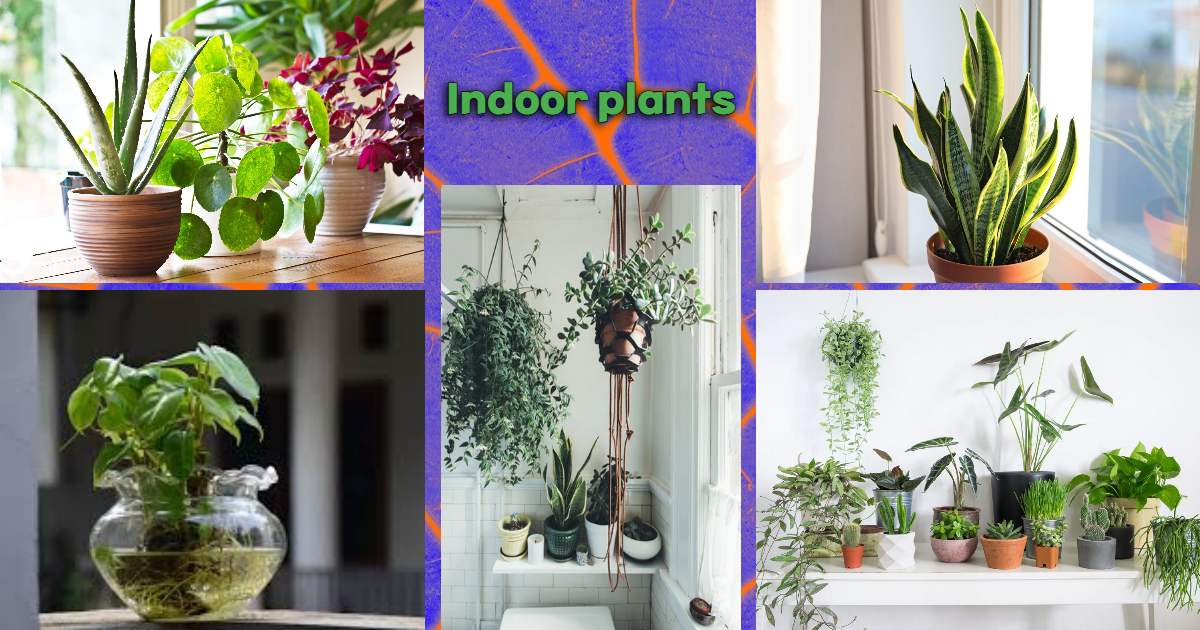Houseplants don’t just brighten your interior design – they’re good for your health too. Indoor plants have huge physical and mental health benefits, but like everything in life, some are better than others. Here’s our rundown of some of the best indoor plants for boosting your health and well-being.
Table of Contents
How Do Houseplants Support Physical Health?
Indoor plants help boost physical health in several ways. The most well-known is that they help clean the air. Plants remove harmful toxins, such as carbon monoxide or cigarette smoke, from the home environment, improving air quality in the process.
Houseplants also release oxygen, which improves indoor air quality. In a process called photosynthesis, indoor plants absorb carbon dioxide and use it to produce oxygen. What this means is fresher air for improved sleep quality. Increasing oxygen in the home can also help prevent and reduce headaches and improve focus.
How Do Houseplants Good for Mental Health?
For a start, plants inside the home make your space look attractive, complementing and accentuating your interior design. The feel-good factor comes from relaxing in a room filled with beautiful things.
More than that, caring for a plant is good for your emotional and spiritual well-being. The satisfaction that comes from nurturing a plant and watching it grow is surprisingly fulfilling and can help reduce stress and anxiety.
How to Get Started and Choose a Plant
All this sounds great, right? But if you’re new to plant parenthood, you may wonder where to start. After all, there are myriad indoor plants to choose from, so how do you know which ones help reduce psychological and physiological stress?
And even if you buy the right plant, will you be able to keep it alive? The good news is that while some plants are divas that demand care and attention, many other plants are more forgiving. You don’t need a green thumb to fill your home with greenery.
Take a look at some of these suggestions of the best plants to boost your physical and mental health.
10 of the Best Indoor Plants with Physical and Mental Health Benefits
Rubber Plant
Rubber plants are one of the best indoor plants for purifying the air, producing oxygen and removing harmful volatile organic compounds (VOCs) from the surrounding area. In fact, rubber plants can reduce airborne particles of mould and bacteria by an impressive 65%.
The rubber plant represents abundance, happiness, and wealth, making it an ideal indoor plant for feng shui enthusiasts. Its large, rounded leaves soften hard angles, minimising negative energies and promoting creativity.
Spider Plant
Spider plants are one of the easiest plants to propagate – so you can get lots of new baby plants for free without much effort. This is great since the spider plant is one of the best houseplants for purifying the air. Spider plants filter harmful toxins, like formaldehyde, from the air. Spider plants can remove around 95% of toxins from the air around them in just 24 hours.
Despite being fast-growing, a spider plant is easy to care for. It prefers bright, indirect light and tolerates sporadic watering. Spider plants are also non-toxic, so you don’t need to keep them out of reach of pets and children.
Peace Lily
There’s a reason the peace lily is among the most popular houseplants in the UK. Not only is it an attractive indoor plant with white flower-like bracts appearing throughout the year, but it also has masses of health benefits.
As well as being full of air purifying qualities, peace lilies help prevent mildew formation by absorbing excess humidity from the surrounding air. A peace lily also effectively removes airborne mould spores and allergens from the air around it, which is beneficial for those with respiratory issues.
Snake Plant
Also known as Mother-in-Law’s Tongue due to its pointed, sword-like foliage, the snake plant is great at removing toxic chemicals from its environment. Unlike some other plants, snake plants are just as effective as air purifiers in low-light conditions. This makes snake plants ideal for bathrooms or north-facing bedrooms.
Even better, snake plants are renowned for being almost impossible to kill. As a succulent plant, they store moisture in their fleshy leaves, so they don’t need to be watered very often and tolerate some amount of neglect. If you are new to tending plants or suspect you may be slightly haphazard in your plant care schedule, the snake plant is perfect.
Dragon Plant
The famous study conducted by NASA showed dragon plants to be one of the top air-purifying houseplants available. Also known as dragon trees due to their central trunk, dragon plants are highly effective at absorbing chemicals and organic pollutants, leaving the air cleaner and fresher.
Dragon plants also help raise humidity levels, releasing moisture into the air. This is ideal for many centrally heated homes and can help combat annoying conditions like sore throats and dry skin.
Lavender
Lavender is well known for having a calming effect and is the ideal houseplant for bedrooms and bathrooms. Studies suggest a lavender plant in the bedroom helps promote deep sleep, leaving you feeling more refreshed in the morning. The plant’s soothing aroma helps reduce stress and low mood and can even alleviate headaches.
Lavender is also beneficial to the health of your other plants. It is a natural pest repellent, keeping your plant collection free of unwelcome bugs. (Lavender also helps repel spiders, which can do wonders for your heart rate!)
Golden Pothos
Also known as Devils’ Ivy, golden pothos is an easy, low-maintenance plant with heart-shaped leaves. Pothos plants prefer indirect sunlight, but devil’s ivy thrives even in low natural light. Golden Pothos is an efficient air purifier, removing VOCs such as formaldehyde, benzene and toluene from the surrounding environment.
Golden pothos also increase humidity in the room, which can help protect against coughs and colds as well as keep skin hydrated.
English Ivy
English ivy, also known as Common Ivy, is one of the best indoor plants around for helping relieve respiratory issues. It effectively removes toxins and allergens from the air and can be particularly helpful to asthma-sufferers. English ivy helps banish airborne mould spores and increases air humidity while removing carbon monoxide.
In Feng Shui, common ivy represents overcoming obstacles and pursuing success, which are great reminders to have dotted around your home to help you achieve your ambitions. English ivy thrives in humid rooms and is perfect for the bathroom or kitchen. It tolerates almost any light conditions but prefers a spot in indirect sunlight.
Aloe Vera
Aloe vera also provides many air-cleaning qualities. However, unlike many other plants on this list, it can be used practically without much training. Aloe vera forms a gel in its fleshy leaves. The gel can get applied topically to relieve mild burns, scratches, and sunburn. Simply cut a leaf away at the bottom of the plant and slice it open to reveal the gel inside.
While aloe vera is bursting with antioxidants and is a popular ingredient in juices and supplements, we don’t recommend you consume it orally straight from the plant.
Aloe vera is the perfect health-boosting plant for beginners as it is incredibly easy to look after. They thrive in bright light and don’t need much watering. In fact, overwatering is the most common way to kill this plant. As a succulent plant, it stores moisture in its leaves so doesn’t require frequent watering.
Boston Fern
Boston ferns are ideal houseplants for anyone prone to dry skin, noses, or throats. They help restore moisture to the air to create a more humid environment and help combat the dryness of central heating. A Boston fern makes an excellent natural humidifier.
The bright fronds on Boston ferns cheer the room with greenery and help clean the air by absorbing harmful chemicals and pollutants. Look after your Boston fern by placing it in indirect light and watering it once a week during the growing season and less often in autumn and winter.
As you can see, many houseplants are bursting with air-purifying properties. Adding plants to your interior design scheme helps remove toxins, such as carbon dioxide, from the air around you, helping you breathe more easily and preventing health issues such as headaches, nausea, colds, and sore throats.
On top of that, research suggests that tending and caring for indoor plants helps reduce autonomic nervous system activity, reducing stress, anxiety, and high blood pressure. There’s even a name for it – horticultural therapy. Whether you opt for a snake plant, a peace lily, or something else, nurturing a plant can work wonders for your mental health.
Visit for more best articles





